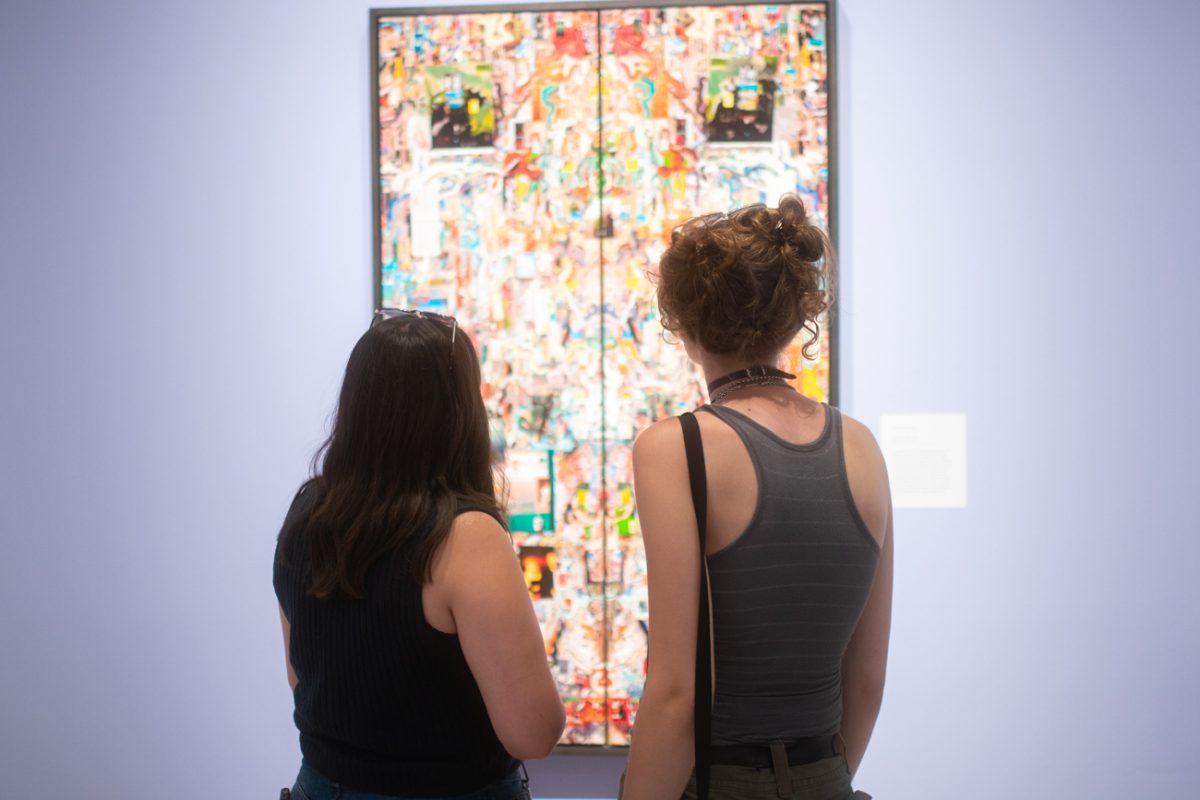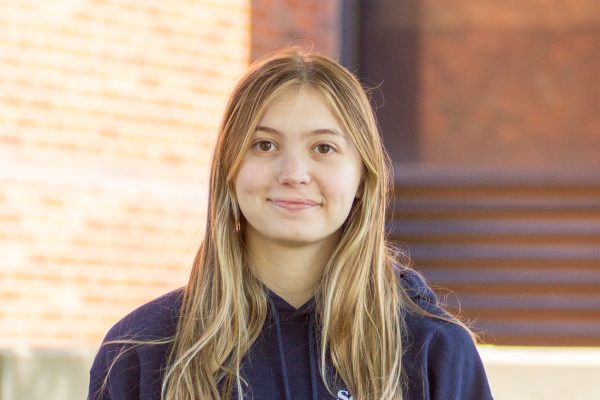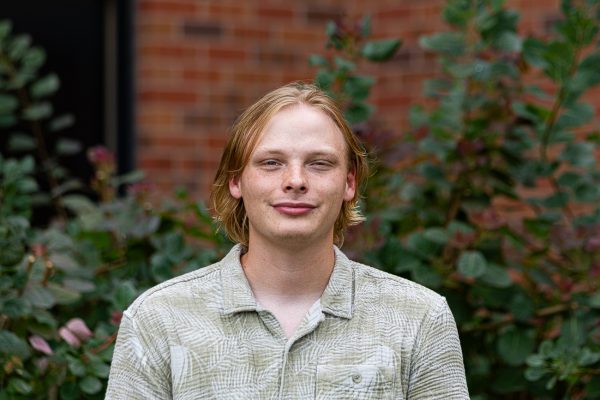When Jo Reinert, curator of Wichita State’s Ulrich Museum, first envisioned “Dream Machine: Fantasy, Reality, and Play,” she knew she wanted to encapsulate the innate attraction people have toward play, fantasy and dreams.
The exhibit, located at the Ulrich Museum of Art, features a wide array of pieces from multiple artists and varying eras of history, with special loans that focus on themes of fantasy, surrealism and Afrofuturism.
The artists utilize a variety of mediums, such as digital artwork, historically conventional pieces and interactive kinetic sculptures that incorporate the viewer’s involvement in the art experience.
Part of what makes this exhibition innovative is the integration of technology into Reinert’s curatorial practice.
Upon stepping into the exhibit, located on the second floor of the Ulrich, Reinert noted the purposeful “airiness” of the room. The open setting was intentional, meant to convey a sense of “the in-between.”
“There’s a lot of space in between the works … that’s supposed to evoke a sense of … liminal spaces and dreams,” she said.
Additionally, Reinert is also interested in the way art and technology interact with each other and can merge mediums.
“It was the intersection of art and technology that I was drawn to, and that can be mechanical as in these kinetic sculptures, or it can be digital, as in, you know, the works of digital media that we have represented,” Reinert said.
Reinert also implemented the technique of “trans-historical curation,” allowing for two pieces created 100 years apart to sit side by side with each other.
“The fun of trans historical curation, in my opinion, is that you are encouraging the viewer to find similarities and differences, you know, dialogue between two pieces,” she said.
One of the most notable pieces featured in the exhibit is that of artist Nettrice Gaskins a visual artist who is famous for “techno-vernacular creativity,” and the blending of generative art with Afrofuturism. Reinert thinks that AI “has the power to ask difficult questions,” and Gaskin’s work helps enable that dialogue.
“She’s not making this in a vacuum,” Reinert said. “She understands that it’s going to be perceived a certain way, but that perception that she’s anticipating is part of the concept.”
When reflecting on AI, Reinert believes Gaskin takes on a nuanced, and “self-aware” approach, memorializing AI’s moment in time with artwork that intentionally uses AI.
“Afro-surrealism is of the very present moment. And so she’s making the point, that, what could be more (timely) than AI,” she said. “She didn’t create this to … masquerade as another medium, she made it very proudly as this ‘I used AI as a tool to create the image that I wanted to convey.’”
“There are obviously very unethical applications of AI, and that’s not what this is,” Reinert said. “This is AI art that is conceptually about AI art … the fact that it is AI is built into the concept of the piece.”
At a time when many are grappling with how to integrate AI into their everyday lives and the effect it will have on creativity, Reinert said, “it’s both a time capsule of when and where and by whom it was created, but it’s also something that you can reflect on, no matter when you’re standing in front of the piece and experiencing it.”
“From far away, it’s colorful and it draws you in, and there’s texture and vibrancy, and the closer you get, you can see these telltale signs of AI,” she said. “She wants that element of being drawn in and sort of sitting with the piece, and perhaps then when you look at the label, your reaction to it being AI is part of that response that she’s looking for too.”
Although the pieces in this exhibit are accessible and fun, much like dreams, they are also at times incongruous and ambiguous.
“If you feel unsettled, sit with that and question it,” she said.





